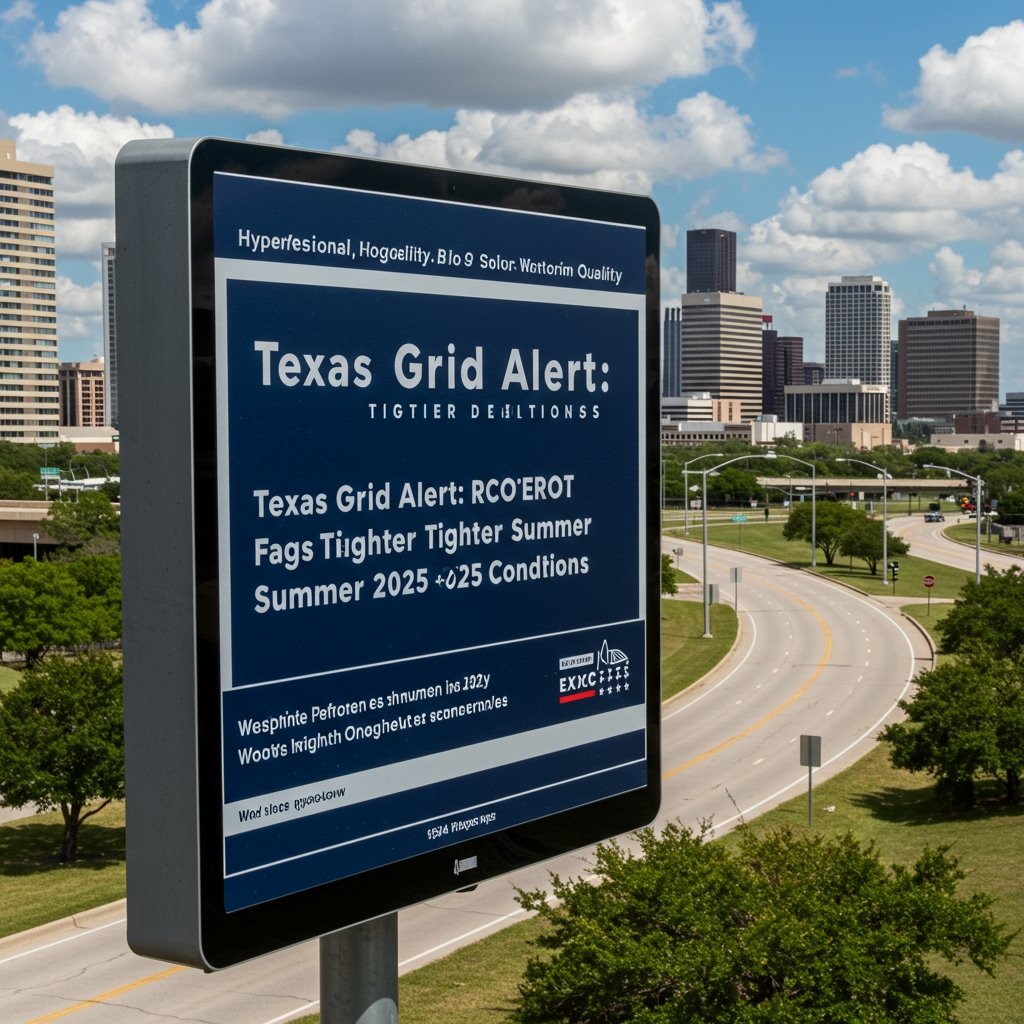ERCOT Report Signals Potential Grid Strain in Summer 2025
A new assessment from the Electric Reliability Council of Texas (ERCOT) casts a cautious outlook on the state’s power grid reliability for the summer of 2025, indicating potentially tighter conditions than previously projected, particularly under scenarios involving extreme heat. The report, titled the Summer 2025 Seasonal Assessment of Resource Adequacy (SARA), was released this week and serves as a critical benchmark for understanding the grid’s preparedness for periods of peak demand.
According to the SARA report’s findings, the projected reserve margin—a key metric representing the buffer between anticipated electricity supply and peak demand—could dip below the 10% threshold under certain confluence of challenging factors. These factors include, but are not limited to, the occurrence of record-breaking temperatures across the vast ERCOT service area and a higher-than-expected rate of unexpected generator outages. A reserve margin below 10% is often viewed by grid planners and experts as approaching a level that could present operational challenges during prolonged periods of high stress on the system.
The assessment arrives more than four years after the catastrophic Winter Storm Uri in February 2021, an event that exposed significant vulnerabilities in Texas’s energy infrastructure and led to widespread, prolonged power outages. In the wake of Uri, state lawmakers enacted substantial reforms aimed at bolstering grid reliability. Key legislative efforts included Senate Bill 3 (SB 3), which mandated weatherization standards for critical generation and transmission infrastructure, and House Bill 1500 (HB 1500), which focused on market redesign and resource adequacy.
Since 2021, significant investments have indeed been made across the ERCOT market. This includes the addition of new generation capacity, particularly from renewable sources like solar and wind, as well as upgrades and expansions to the transmission network. These investments were intended to increase the overall capacity and resilience of the grid to meet Texas’s rapidly growing electricity demand.
Ongoing Concerns Despite Reforms and Investment
Despite the legislative reforms and capital injections, the latest SARA report highlights that concerns regarding grid reliability during prolonged heatwaves persist. Both grid experts and consumer advocates have voiced ongoing apprehension. Their concerns often center on the operational characteristics of different generation types, particularly the need for reliable, dispatchable power sources—those that can be called upon regardless of weather conditions—to ensure stability when intermittent resources like solar and wind may not be fully available, or when demand remains exceptionally high for extended periods.
The report’s projection of a potential dip below a 10% reserve margin under stress scenarios underscores these concerns. While ERCOT’s planning models account for various contingencies, the possibility of demand exceeding supply under combined pressures like extreme heat and unforeseen equipment failures remains a critical focus for stakeholders.
Heatwaves pose a particular challenge because they simultaneously drive up electricity demand for cooling and can reduce the efficiency or availability of some generation types. Prolonged heat further strains infrastructure and can increase the likelihood of forced outages.
Implications for Policy and Market Design
The findings presented in the Summer 2025 SARA report are expected to fuel further debate among state lawmakers and the Public Utility Commission (PUC) of Texas. The PUC, which oversees ERCOT and the state’s electric market, has been actively involved in exploring market design changes aimed at improving reliability and incentivizing needed generation resources.
The debate is likely to intensify around specific market design changes and potential incentives for dispatchable power. Options under consideration have included performance-based mechanisms, capacity markets (a departure from Texas’s traditional energy-only market), or other structures designed to ensure adequate firm generation capacity is available when needed most.
The timing of this report is also significant as discussions and potential regulatory actions continue ahead of the 2027 legislative session, where energy policy is expected to be a prominent topic. Lawmakers may consider further statutory changes based on the grid’s performance and the outcomes of the PUC’s ongoing market redesign initiatives. The 2025 SARA report provides concrete data points that will inform these future policy discussions and decisions.
In summary, ERCOT’s Summer 2025 SARA report serves as a timely reminder that despite significant post-Uri improvements, managing the Texas grid’s reliability, especially during increasingly frequent and intense weather events, remains an complex and evolving challenge requiring continued vigilance and strategic policy action. The report underscores the importance of balancing resource adequacy, market signals, and infrastructure resilience to meet the state’s burgeoning energy needs.






